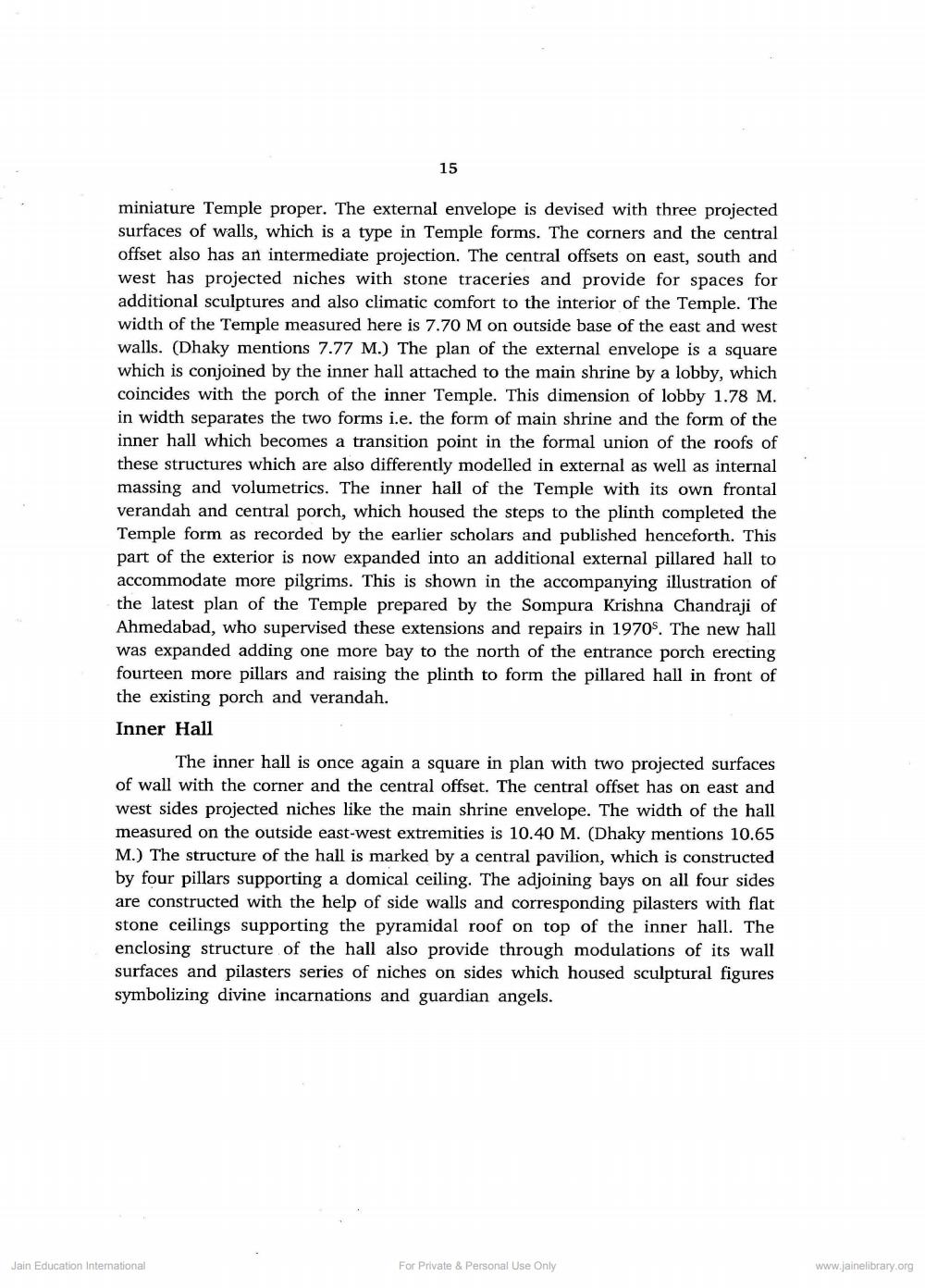________________
miniature Temple proper. The external envelope is devised with three projected surfaces of walls, which is a type in Temple forms. The corners and the central offset also has an intermediate projection. The central offsets on east, south and west has projected niches with stone traceries and provide for spaces for additional sculptures and also climatic comfort to the interior of the Temple. The width of the Temple measured here is 7.70 M on outside base of the east and west walls. (Dhaky mentions 7.77 M.) The plan of the external envelope is a square which is conjoined by the inner hall attached to the main shrine by a lobby, which coincides with the porch of the inner Temple. This dimension of lobby 1.78 M. in width separates the two forms i.e. the form of main shrine and the form of the inner hall which becomes a transition point in the formal union of the roofs of these structures which are also differently modelled in external as well as internal massing and volumetrics. The inner hall of the Temple with its own frontal verandah and central porch, which housed the steps to the plinth completed the Temple form as recorded by the earlier scholars and published henceforth. This part of the exterior is now expanded into an additional external pillared hall to accommodate more pilgrims. This is shown in the accompanying illustration of the latest plan of the Temple prepared by the Sompura Krishna Chandraji of Ahmedabad, who supervised these extensions and repairs in 1970s. The new hall was expanded adding one more bay to the north of the entrance porch erecting fourteen more pillars and raising the plinth to form the pillared hall in front of the existing porch and verandah. Inner Hall
The inner hall is once again a square in plan with two projected surfaces of wall with the corner and the central offset. The central offset has on east and west sides projected niches like the main shrine envelope. The width of the hall measured on the outside east-west extremities is 10.40 M. (Dhaky mentions 10.65 M.) The structure of the hall is marked by a central pavilion, which is constructed by four pillars supporting a domical ceiling. The adjoining bays on all four sides are constructed with the help of side walls and corresponding pilasters with flat stone ceilings supporting the pyramidal roof on top of the inner hall. The enclosing structure of the hall also provide through modulations of its wall surfaces and pilasters series of niches on sides which housed sculptural figures symbolizing divine incarnations and guardian angels.
Jain Education International
For Private & Personal Use Only
www.jainelibrary.org




